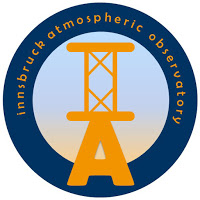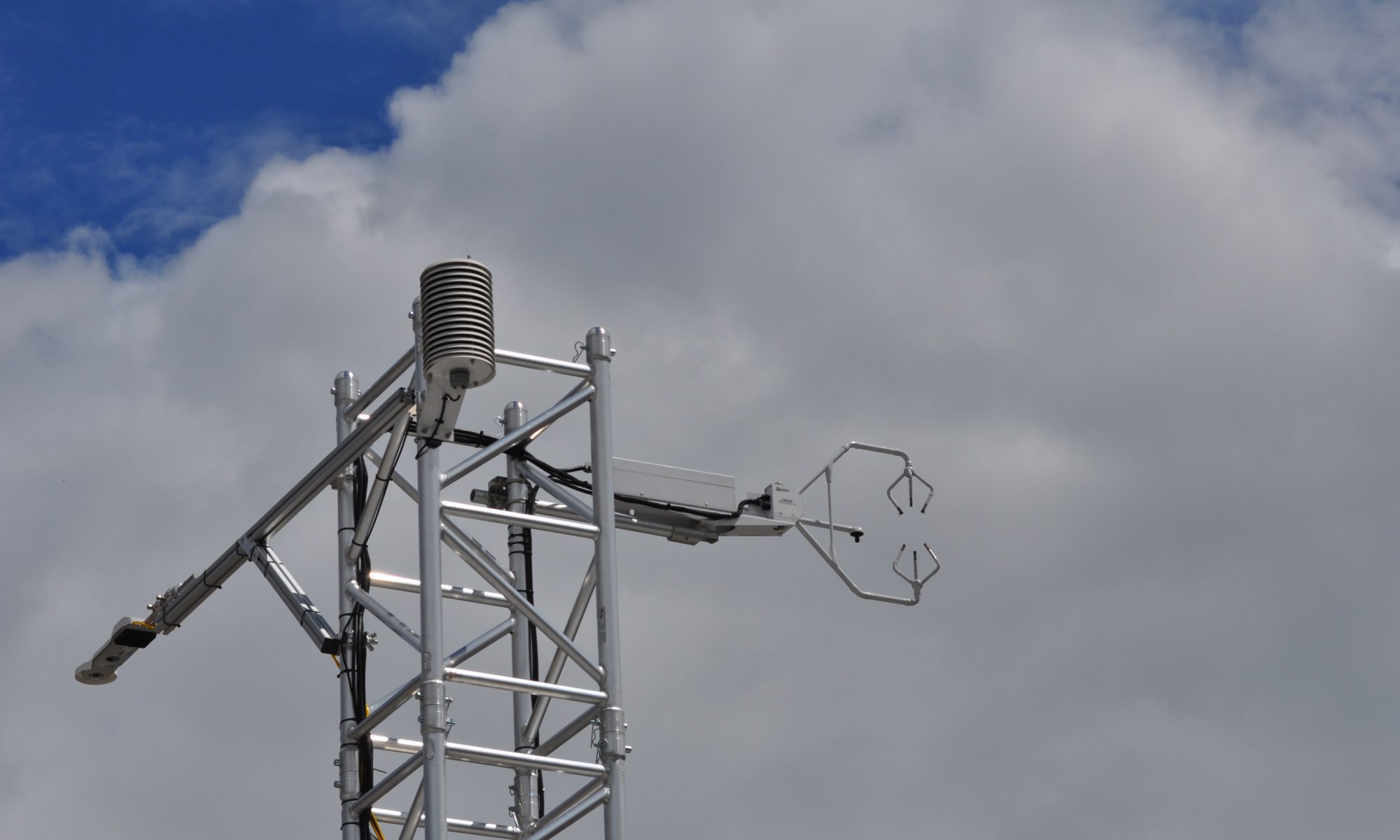
Innsbruck Atmospheric Observatory (IAO) started the summer 2018 intensive observation period. The aims of the study include:
- quantifing and characterizing urban summertime emissions of various trace gases
- improving our understanding of the NO-NO2-O3 triad in an urban environment
- relating flux ratios (NOx/CO2, CO/CO2) above the urban canopy to the respective enhancement ratios at street level
The Following instrumentation is operated at two ground sites:
IAO Rooftop Tower
- Sonic anemometers (CSAT) at 609m, 614m and 617m elevation [EC]
- Closed-Path IRGA (EC155) for fast H2O and CO2 mixing ratios at 617m [EC]
- Inlet of a high flow manifold colocated with CSAT at 617m for the chemical anaysis of trace gases by
- Two channel NO/NOx monitor (CLD 899 Y; Ecophysics) [EC]
- Cavity RingDown Spectrometer (CaRDS; Los Gatos) for direct measurement of NO2 [EC]
- Chemical Ionization Mass Spectrometry (CIMS) for various volatile organic compounds using a PTR-Qi-TOF (Ionicon) in H3O+ and NO+ mode [EC]
- Quantum Cascade Laser (QCL) Spectrometer (Aerodyne Research) for CO, CH4, CO2 and possibly OCS and N2O [EC] operated by Georg Wohlfahrt and Albin Hammerle
- Fast Ozone Sensor (FOS; Sextant Technology) base on chemiluminenscence of O3 and courmarin [EC]
- Ozone monitor (APOA260; Horiba) for the continuous calibration of the FOS
- Remote sensing of NO2, O3,… by DOAS (Pandora; Luftblick) providing whole atmosphere column as well as near-surface volume concentration products
- Four component radiation sensor (CNR4) as well as T, rH at 617m
[EC] marks intruments with high sampling rates for eddy covariance capability
IAO Roadside Station
- Remote sensing of vertical wind profiles by Doppler wind LIDAR
- Sonic anemometer and IRGA (CPEC) at 577m elevation
- Inlet of a manifold colocated with CPEC at 577m for the chemical analysis of trace gases by
- NO/NOx monitor (APNA360, Horiba)
- CO monitor (APMA360, Horiba)
- Ozone monitor (ML8810)
- Four component radiation sensor (CNR4) as well as T, rH at 577m
Beyond these two stations mobile DOAS measurements will be operated from a passenger car along the Inn valley between Schwaz and Kematen by Stefan Schreier.

Nice dataset measured during the summer season!